Rediscovering the Sahara
Archaeological finds often help to dispel myths and misconceptions about different eras and places. The city of Djado, an impressive abandoned fortress in northern Niger, shatters the common perception of the Sahara desert. Most people usually describe the area as a large, unstable territory that is permeated by political issues and sought after for its many resources. Yet it becomes a wonderful wonderland just by mentioning the Djado Plateau.
The Sahara Desert, which includes ten North African countries, is the guardian of many archaeological treasures. Established from ancient Egypt and cities such as Timbuktu, we provide insight into ancestral civilizations by preserving their unique architecture and ancient artifacts as evidence of their prosperous past. Djado represents another city that is able to give us testimonies from another time. But the ruins of such a mysterious city can only arouse the curiosity of the people who lived there.
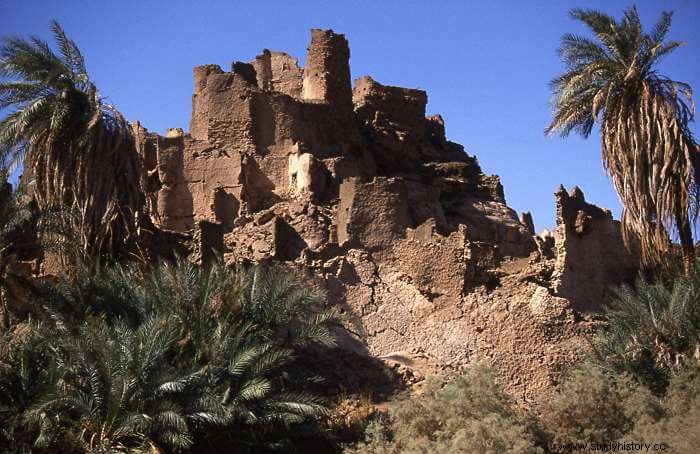
Djado, the abandoned city
Imagine being a merchant in the year 1032, and seeking to exchange textiles for precious goods, such as salt. After leaving Libya, you reach the threshold of a fortified city. The sight of impressive ksars on top of a 1,500-foot-high plateau, made of a maze of mud buildings, unfolds before you. The kasars seem to have grown straight out of the sand, but scattered green areas surround the fort. This may be your experience as a trader when you come to Djado City during the Kanem-Bornu Empire.
The Djado fort, nicknamed after its location, the Djado Plateau, is made of the traditional ksar constructions found in various places in the Sahara. Mauretania, the city of Timbuktu (Mali), or the mosques of Agadez (Niger) are notorious for such architectural constructions. Ksars (or Ksour) are North African fortified villages made of mud buildings. From the spectator's point of view, Djado can look like an ethereal sand castle in real life, rising from the desert and casting a shadow on the Aïr mountains. But as the plateau was still full of human activity, a diverse flora adorned the city and its surroundings.

The plateau lay desolate, in every sense of the term. Like a ghost town, Djado has stopped bustling with life:its inhabitants have fled centuries ago. Much of the fauna has found new habitats or become extinct.
Anthropology of the Djado people
The Djado plateau gets its notoriety from its dual cultural significance in anthropology. Not only does it preserve the ruins of a fortress town. But it also contains many objects that go back to prehistory. A visit to Djado actually takes us on two different trips back in time. One lifts the veil at the beginning of human civilization, with one's ancestors, yet living realistic art. And the other suggests the extraordinary modernity of a people who lived thousands of years ago, until they had no choice but to flee.Prehistoric art
Human presence in the Djado region dates back to the Neolithic period. In 2006, Unesco added the site to its tentative World Heritage List, as it is full of archeological artifacts and historical monuments of enormous cultural and anthropological significance. First, the plateau and the Aïr mountains show drawings and carvings dating back to around 12,000 to 6,000 BP.

The depiction of a large wild fauna forms a significant part of rock art images in Djado. In fact, giraffes, elephants, rhinos, large bovines such as babulus, used to thrive in the territory before dehydration made the area less habitable. During that time, humans would hunt such animals using prehistoric weapons, such as axes and spears.
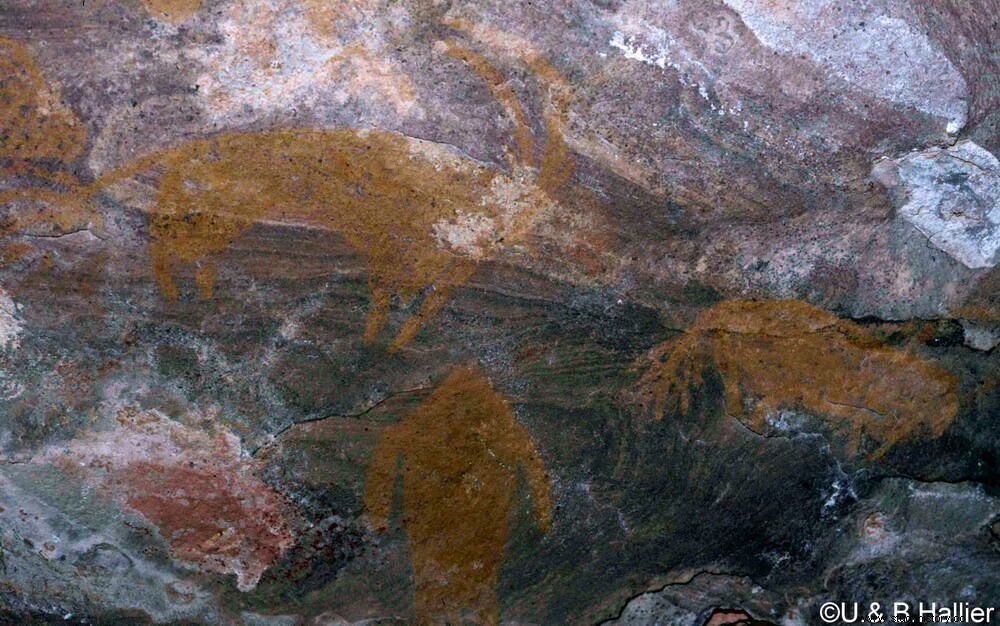
Early humans often portrayed themselves with the animals they hunted, perhaps as a way to establish order between humans and animals and assert their power. This perception of authority could have led to shaping our vision of our place in nature. Hunting scenes and drawings of animals have made it possible for archaeologists to understand what the Sahara used to look like before it became the world's largest hot desert.
The stones adorned in the Tenere Desert are also intricate carvings depicting humans, animals and abstract patterns. The carvings are made of sharpened stones or metals, and usually show common patterns such as dots, lines or human figures.
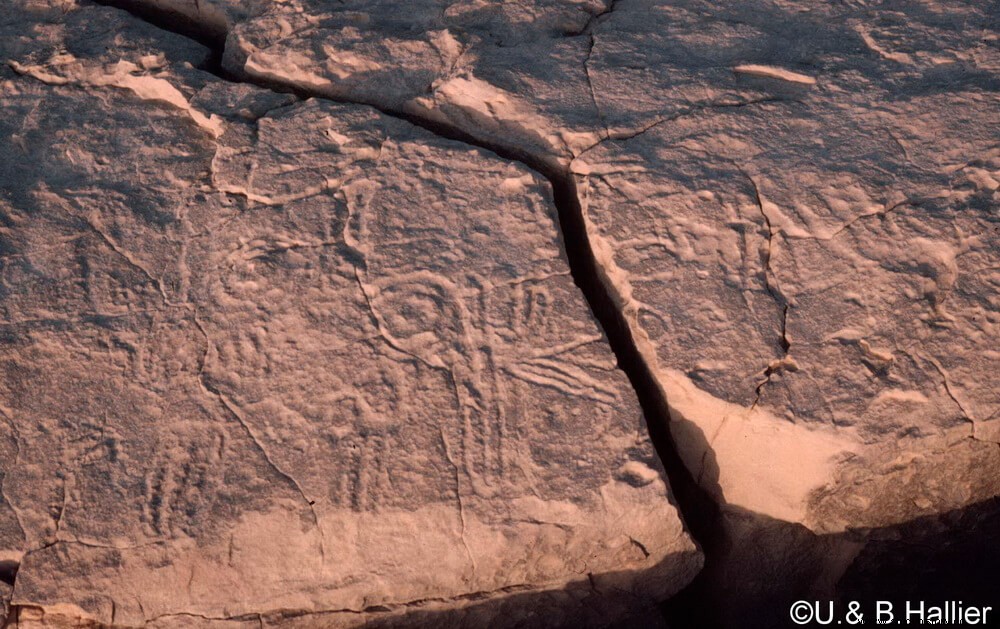
Decrypt the meaning of stone paintings.
Hand paintings regularly appeared on the walls of prehistoric caves, as if they were a testimony to human presence and a desire to leave traces behind. Prehistoric hand paintings have long fascinated anthropologists and archaeologists. They are found on every continent, sometimes with one or more missing fingers, as if different hand dispositions were meant to communicate secret messages.
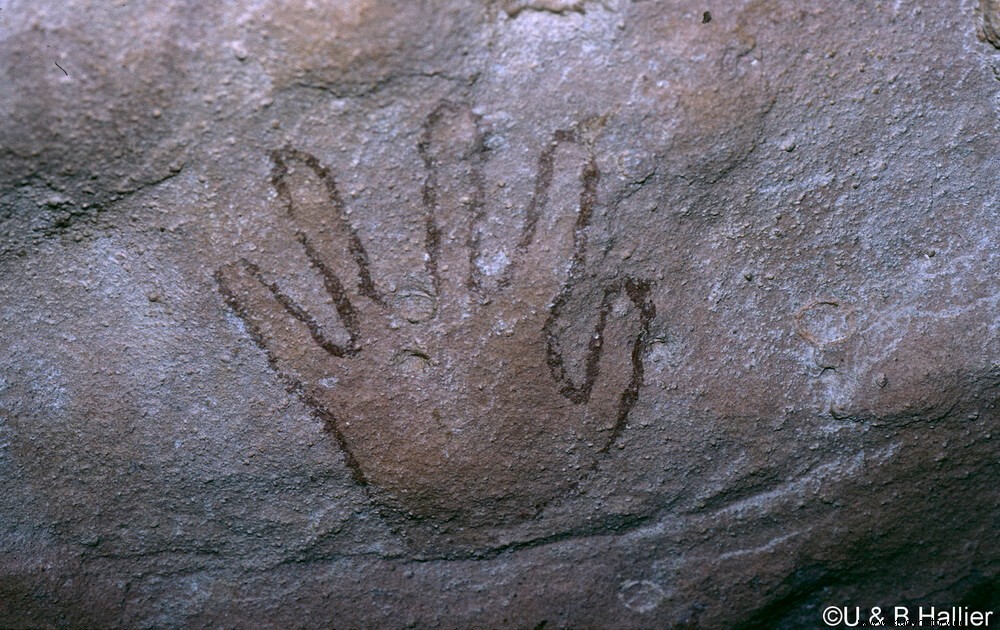
Decrypting such simple but enigmatic drawings proved to be a difficult task for archaeologists and anthropologists around the world. Was it just a way to make a mark? Or could it have been a way of portraying a certain sense of identity? Some archaeologists believe that handshakes were part of a ritual:Can this art allow us to enter into the spiritual life of our ancestors?
Hand drawings or prints can evoke strong emotions in the modern observer, as they connect us with our earliest form of humanity. Despite the thousand-year-old gap and the lack of knowledge about their meanings, such art forms enable us to understand the level of consciousness of early humans.
Ksar infrastructure
No major excavation missions have been carried out in Djado's barracks. In addition, the desertification process has made access to the fortress particularly difficult. Fortunately, this lack of access had a silver lining:it preserved the fort from man-made deterioration. Although the fort dates back to the Middle Ages, it has been shown to be relatively resistant to climate change. This has something to do with the construction process of ksars.
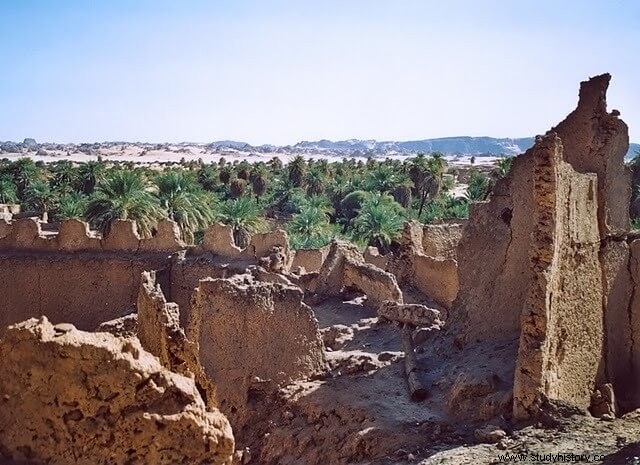
The structure of ksars consists of using palm trunks as a foundation, and covering them with adobe, a material made from affected soil. The use of Adobe results in the creation of a very strong, long-lasting structure that generates minimal amounts of waste. Apart from mud houses, Djado also consisted of mosques, shops, granaries to store grain and possibly bathhouses. Many emperors had fortified towers that stood on the sides of a wide terrace used by farmers to dry grain. Like many similar cities in North Africa, Djado was built in a mountain range, the Aïr Mountains, a strategic location to facilitate defense during conflicts. A single wall protects the entire complex structure.
The many tribes of Djado
With the discovery of such an impressive architecture came a necessary but difficult task:to find out who built it. Different tribes have always lived with each other in the Sahara region. But that does not mean that cohabitation was not difficult. In fact, feuds between different ethnic groups and rivalry over territories are to this day a cause of conflict. The demographics of the area and its development into a history of struggle for control of resources.
The Guaranteed Kingdom
Given the current demographics of northeastern Niger, many believe that the city was first founded and inhabited by Amazigh (formerly called Berbers). In fact, the area was previously occupied by a group of Lybico-Berbers, namely the Garamantes. Based on a strong agricultural economy, the Guarantian Empire ruled over a significant part of the Fezzan region from about 117 to 138 AD. The guarantors achieved great success in agriculture thanks to their complex irrigation system. To get plenty of crops, they used groundwater, a fossil resource, which they obtained by digging tunnels under the sand. But unfortunately, their greatest resource eventually became a weakness. As groundwater depletion progressed, the Guarantor empire slowly moved toward collapse.

Collapse of the Guaranteed Kingdom and Climate Variations
Some historians believe that their irrigation system partially caused desertification of the area. This further proves that, contrary to popular belief, man-made climate change is not a new phenomenon:on the contrary, the increase in agriculture in early civilizations led to some of the first instances of resource overuse. Unfortunately, the fall of the Guaranteed Kingdom gives us an ominous insight into our own future, as we continue to use and extract non-renewable resources at the expense of our environment and ultimately our livelihood.
Apart from relying heavily on agriculture for economic prosperity, Garamantes also traded goods such as salt and slaves, which were two of the most important "products" traded in Djado. The guarantors clearly played an important role in the Djado area. However, the garrison empire fell long before the construction of the fortress city. Archaeologists therefore believe that although the builders of Jado's emperors may have tried to recreate Berber traditional buildings, it is likely that it was mostly occupied by another ethnic group:the Canaries.
The Canaries and the Kanem-Bornu Empire
The Canaries are an ethnic group that had a significant economic and cultural impact on the history of Djado. The roots of this traditionally sedentary group go back to the medieval Kanem-Bornu Empire. The Kanem-Bornu Empire was founded before 1000 AD. and included what is now Cameroon, Chad and Nigeria. At its height, however, the government expanded over present-day southern Libya and eastern Niger. Like Djado, the city of Kanem was a major trading center, connected to other cities via the Trans-Saharan trade route. Their success in trade and salt treatment enabled the canaries to achieve a high level of control over the area.

Toubou -folket
This makes the case even more ambiguous. Some Toubous and Kanurier have claimed that another people, Soos (or Soas), built the fortress city. Lack of thorough research leaves this claim unclear. However, the Toubou people, a nomadic pastoralist people, have undoubtedly inhabited Djado for a long time. Historically, Toubou people have often lived near oases. They could easily settle there with their cattle and grow a variety of grains, legumes and dates. To this day, they still have a presence on the seemingly deserted Djado plateau. In the summer they return to the plateau to choose dates. Toubous settled in Djado after the premises were abandoned by the majority of the canoes. Some literature also claims that a group of Shuwa Arabs inhabited the fort before it was deserted.
Tuaregene
Although the Tuareg had no control over the area, they still had a definite presence in Djado, as shown by the several conflicts they had with Toubous. The Tuaregs can be considered the original inhabitants of the Tenere Desert. Like their ancestors, some of Tuareg still practice a nomadic lifestyle today. The Tuareg are known for their involvement in several conflicts in the Sahel, and have struggled to gain recognition for their rights as well as for their cultural richness.
During its most prosperous period, Djado served as a commercial crossroads. It attracted people from very different places, whether they came from the south or from the Middle East. There, merchants exchanged a lot of goods. Gold, salt, clothing, wheat, alum were precious goods. And, of course, slavery represented a large part of the goods traded.
Why did Djados' people flee the plateau?
The mystery of Djado lies in emptiness. Why should people flee from such an important shopping center and let it crumble away? The answer probably lies in the worsening of climatic conditions. But several hypotheses have emerged over the past decade.
First theory:a large-scale mosquito attack
Djados oasis attracted settlers because of its fertility. Surrounded by a reedy lake, Djado allowed different types of vegetation to grow. Unfortunately, Djado residents had to deal early with malaria mosquito attacks. At some point, the attack may have become too much of a strain. Residents had no choice but to flee.
Second theory:a worsening of desertification
Eventually, dehydration of the earth may have become a threat to the inhabitants' livelihood. In fact, for Toubous, their lifestyle depended heavily on their livestock. With the formation of the desert, the vegetation became rarer, which made grazing increasingly difficult. The dry and hot climate could have made Djado gradually more inhospitable and difficult to access.

Third theory:intra-ethnic conflicts and village destruction
In the 12th century, conflicts between Toubous and Tuaregs reached a breaking point. Tuaregs targeted Toubous regularly with raids (called rezzous). For centuries, the conflict did not subside, not even when French colonization began. The frequent massacres and the constant looting could have led to the destruction of villages on the plateau.
Is Djado a mirror of the current situation in the Sahara?
The end of Djado's prosperous time has many similarities with the current situation in the Sahara. Armed conflicts between hostile tribes still plague the area. Tensions usually arise from attempts to take control of territories. The presence of sought-after resources, such as oil, uranium and underground water, attracts foreign oil companies and creates unhealthy competition. The situation has reached a terrible point in the Djado region, so much so that tourists are discouraged from visiting the place.
Furthermore, there is a threat of climate change looming over the area. Every year, the desert eats another 450,000 XNUMX acres of the Sahel. As desertification takes over and famine and drought affect more and more people, the future looks increasingly bleak. To make insults more harmful, endangered species, such as the Sahelian cheetah, are on the verge of extinction.
But things look up in certain areas. The Sahara strives to preserve its unique history and restore the environment. In the Sahel, farmers have started a collective process of natural regeneration. As a result, it turned out that in 2005, 12 million acres of vegetation showed signs of regeneration. This process also succeeded in slowing down erosion and increasing soil fertility. The inhabitants of the Sahara and the Sahel have become increasingly committed to preserving the environment, while ensuring that their history and traditions also remain intact. Without a doubt, Djados' spirit lives on in the Tenere Desert.
